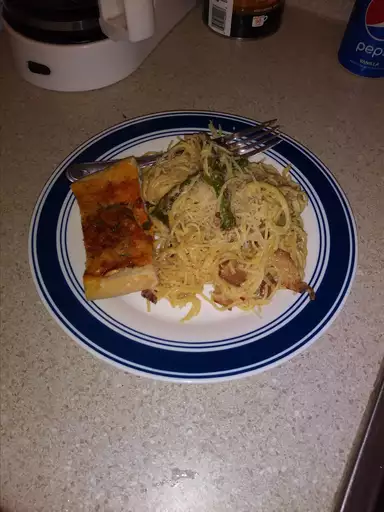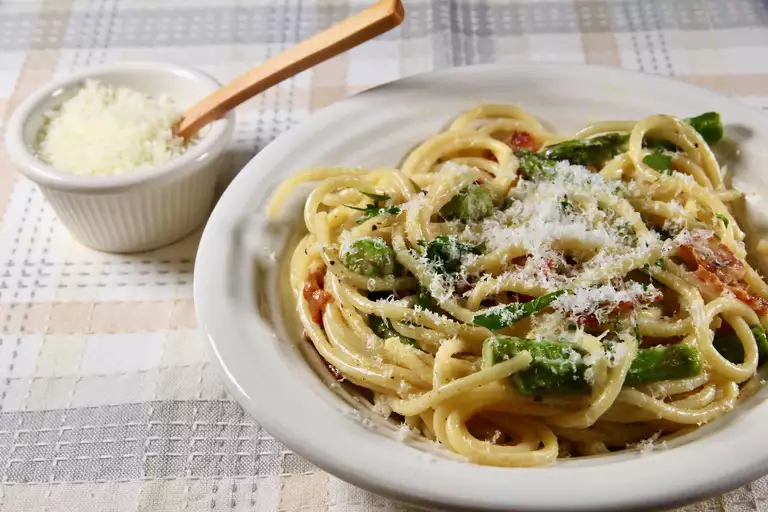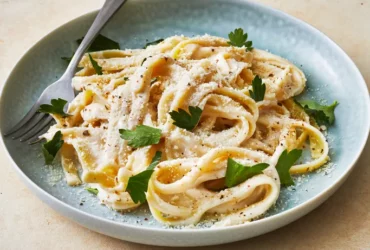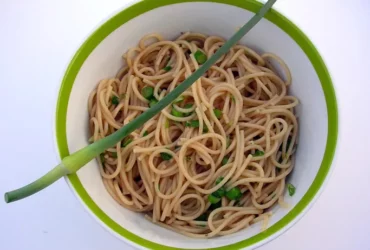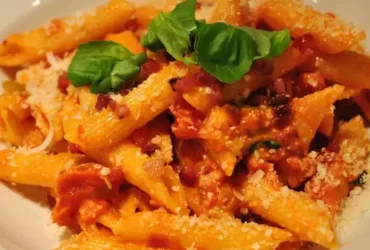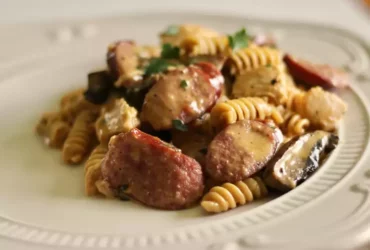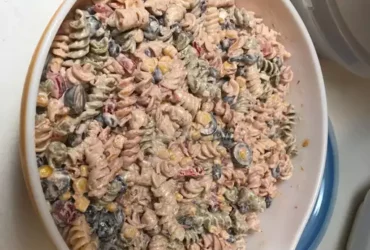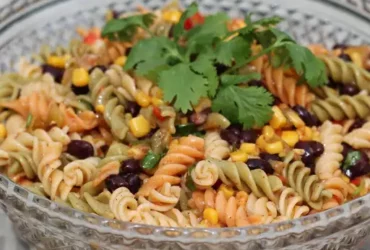Ingredients
Fresh Asparagus: Select fresh asparagus with tightly closed buds, as recommended by the University of California, Davis.
To select fresh asparagus for your Asparagus Carbonara recipe, it’s essential to choose spears with tightly closed buds, as recommended by the University of California, Davis.
Here are some key characteristics to look for when selecting fresh asparagus:
- Freshness: Select asparagus with tightly closed buds. This indicates that the asparagus was picked recently and has not begun to lose its flavor and texture.
- Color: Choose spears with vibrant green color. Avoid those that are pale, yellow, or have dark tips, as these may be old or past their prime.
- Tips: Opt for asparagus with tightly closed buds. This ensures the spears will retain their flavor and texture during cooking.
- Size: Select spears that are uniform in size and shape. Avoid those that are thin or thick, as these may not cook evenly.
When selecting fresh asparagus for your Asparagus Carbonara recipe, remember to choose spears with tightly closed buds, vibrant green color, and uniform size and shape.
By following these guidelines, you’ll be able to select the freshest asparagus for your dish, ensuring it tastes its best. Don’t forget to trim the ends of the asparagus before cooking and cook until tender but still crisp.
Pasta: Choose high-quality spaghetti or fettuccine to pair perfectly with the asparagus and rich sauce.
When it comes to choosing the perfect pasta for your Asparagus Carbonara, selecting a high-quality option will elevate the dish and complement the delicate flavors of the asparagus and rich sauce.
For this recipe, you can’t go wrong with either spaghetti or fettuccine. Both options work beautifully with the springy texture of fresh asparagus and the creamy richness of the carbonara sauce.
However, if you want to get a bit more specific, here are some tips for choosing the right pasta:
- Spaghetti: This long, thin, cylindrical pasta is a classic choice for Asparagus Carbonara. Its smooth texture and neutral flavor won’t compete with the asparagus or sauce, allowing each component to shine.
- Fettuccine: A flat, wide noodle made from egg and flour, fettuccine has a subtle richness that will complement the creamy carbonara sauce. Its surface area also allows it to hold onto the flavorful sauce beautifully.
Ultimately, the choice between spaghetti and fettuccine comes down to personal preference and what you have on hand in your pantry. Both options will result in a delicious and satisfying Asparagus Carbonara dish that’s sure to impress!
Italian Pancetta or Bacon: Use guanciale for a more authentic Italian flavor, or opt for pancetta as suggested by The Oxford Companion to American Food and Drink.
Cooking a delicious Asparagus Carbonara requires several key ingredients to bring out the authentic Italian flavors. One of the essential components is the type of cured meat used in the dish.
Traditionally, guanciale is preferred in Italy for its rich and savory flavor, which pairs perfectly with asparagus and eggs. Guanciale is an Italian cured pork jowl that has been air-dried to create a delicate and unsmoked meat that’s simply divine.
However, if you’re unable to find guanciale or prefer a more accessible option, pancetta is a great alternative. Pancetta is a type of Italian bacon that’s cured in salt and spices, resulting in a crispy exterior and a rich, savory interior. As suggested by The Oxford Companion to American Food and Drink, pancetta is an excellent substitute for guanciale in this recipe.
When selecting either guanciale or pancetta, make sure to choose a high-quality product that’s made from 100% pork and has no added preservatives or nitrates. This will ensure that your Carbonara has the authentic Italian flavor you’re looking for.
Here are some key characteristics of guanciale and pancetta:
- Guanciale: Air-dried, unsmoked, and cured in salt and spices, resulting in a delicate, savory flavor.
- Pancetta: Cured in salt and spices, with a crispy exterior and a rich, savory interior.
When using guanciale or pancetta in your Asparagus Carbonara recipe, be sure to chop it finely and cook it until crispy to bring out its full flavor. This will help create a delicious and authentic Italian dish that’s sure to impress your friends and family!
Instructions
Cooking Asparagus: Bring a pot of salted water to a boil and blanch the asparagus for 4-6 minutes until tender but still crisp.
When cooking asparagus, it’s essential to choose fresh and high-quality spears to ensure they retain their tender yet crunchy texture.
To start, bring a pot of salted water to a boil – using about 1-2 tablespoons of kosher salt per quart of water is recommended. This will not only flavor the asparagus but also help break down its cell walls, making it more tender and easier to digest.
Once the water is boiling, carefully add the asparagus spears in a single layer – overcrowding the pot can result in steamed rather than blanched asparagus. The goal here is to briefly submerge the spears in boiling water, so they retain their vibrant green color and crunchy texture.
Blanching time will vary depending on the thickness of the asparagus spears, but typically 4-6 minutes is sufficient for most varieties. You can check for doneness by inserting a sharp knife or tongs into the thickest part of the spear – if it still offers some resistance but yields easily, it’s ready.
Once cooked to your liking, immediately transfer the asparagus spears to an ice bath to stop the cooking process and help preserve their bright green color. This is a crucial step in maintaining the asparagus’ texture and appearance for your Carbonara dish.
Drain the blanched asparagus from the ice bath, pat it dry with paper towels, and set it aside until you’re ready to assemble the Carbonara. Your perfectly cooked asparagus will now be a delicious and integral component of your Asparagus Carbonara Recipe.
Cooking Pasta: Cook spaghetti according to package instructions until al dente, then reserve 1 cup of pasta water before draining.
To prepare a delicious Asparagus Carbonara, it’s essential to follow the proper instructions for cooking pasta. In this case, we’ll be focusing on cooking spaghetti according to package instructions.
Here are the step-by-step guidelines:
Cooking Spaghetti
- Start by bringing a large pot of salted water to a boil.
- Add the spaghetti to the boiling water and cook according to package instructions until al dente.
- This should take approximately 8-10 minutes, depending on your preference for the texture.
Reserving Pasta Water
- Before draining the spaghetti, reserve about 1 cup of pasta water.
- This reserved water will be useful later in the recipe when we add it to the carbonara sauce.
Draining and Serving
- Once the spaghetti is cooked, carefully drain it in a colander under cold running water to stop the cooking process.
- Gently shake off any excess water from the pasta to prevent it from becoming sticky.
- This step helps the carbonara sauce adhere evenly to the spaghetti, ensuring a rich and creamy texture.
Serving and Variations
Preparing the Sauce: In a medium bowl, whisk together eggs, Parmesan cheese, and a pinch of salt. Add reserved pasta water to create a creamy sauce, as suggested by the Harvard Common Press’s “The Essentials of Italian Cooking”.
The creamy sauce that completes an Asparagus Carbonara dish is made by combining eggs, Parmesan cheese, and a pinch of salt in a medium bowl.
Whisk these ingredients together until they are well combined, creating a smooth and even mixture.
This step is crucial in ensuring that the sauce does not separate or become grainy when cooked.
Preparing the Sauce:
Eggs: Crack 2-3 large eggs into the bowl, depending on the size of your asparagus dish.
- Use room temperature eggs for easier whisking and a smoother sauce.
- Be sure to crack the eggs gently to prevent any eggshell fragments from getting into the mixture.
Parmesan Cheese: Add 1/4 cup of grated Parmesan cheese to the bowl.
- Select a high-quality, aged Parmesan cheese for the best flavor.
- Grate the cheese using a box grater or a food processor with the shredding attachment.
Pinch of Salt: Add a pinch of salt to the bowl.
- Use flaky sea salt for the best flavor, as it dissolves easily and doesn’t leave any residue.
- Add the salt gradually, tasting the mixture as you go, until it reaches your desired level of salinity.
Reserved Pasta Water: Add some reserved pasta water to the bowl.
- Use about 1-2 tablespoons of reserved pasta water to achieve a creamy consistency.
- Add the pasta water gradually, whisking constantly to avoid lumps or separation.
Whisk the Mixture: Whisk the mixture vigorously until it is smooth and even.
- Be sure to get into the corners of the bowl to ensure all ingredients are well combined.
- Continue whisking until the sauce reaches your desired consistency, whether it’s thin and pourable or thick and creamy.
By following these steps, you can create a delicious and creamy sauce that complements the flavors in an Asparagus Carbonara dish.
Assembling the Dish: Combine cooked pasta, blanched asparagus, and creamy egg mixture in a large bowl. Toss everything together to coat the pasta evenly.
To create an exceptional Asparagus Carbonara, it’s essential to assemble the dish with care, ensuring that each component complements the others in harmony.
Begin by combining cooked pasta, preferably a medium-length shape like penne or fettuccine, with blanched asparagus spears in a large bowl. The asparagus should be tender yet still crisp, retaining its vibrant green color and delicate flavor.
Next, add the creamy egg mixture, which typically consists of beaten eggs mixed with grated Parmesan cheese, salt, and black pepper. Gently pour this mixture over the pasta and asparagus, ensuring that everything is well coated.
The key to a successful Carbonara lies in the delicate balance of creaminess and texture. To achieve this, it’s crucial to toss the ingredients together with care, using a gentle yet firm motion to distribute the egg mixture evenly throughout the dish.
This process not only coats the pasta but also helps to create a smooth, velvety sauce that clings to each strand of spaghetti. As you toss the ingredients together, be mindful of the temperature and texture of the eggs, ensuring they’re still warm from cooking but not too hot to handle.
- Best Datanyze Alternatives for 2025 - April 24, 2025
- Best Hunter.io Alternatives for 2025 - April 22, 2025
- Best Lead411 Alternatives for 2025 - April 22, 2025

